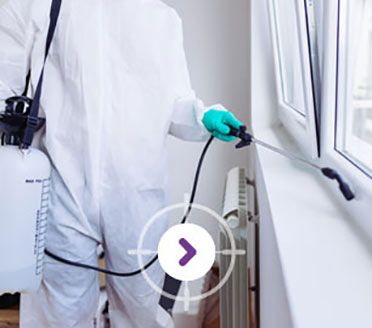Published 15 July 2025
West London Pest Problems: Early Signs You Shouldn’t Ignore Maintaining a clean, safe, and pest-free home in West London is no easy task, especially in an area known for its mix of historic properties, terraced housing, and dense urban living.
These conditions create the perfect breeding ground for pests, from rodents and cockroaches to ants, bed bugs, and moths.

The older structures and shared walls common in the region often allow pests to spread silently between properties, making detection more difficult and infestation more likely.
What makes pest problems particularly dangerous is their ability to remain hidden for weeks, or even months, while causing serious damage behind the scenes. Rodents chew through electrical wires, increasing fire risks; termites silently destroy timber structures; and cockroaches spread harmful bacteria, threatening your family’s health. Unfortunately, most homeowners don’t realise they have a problem until visible evidence surfaces, by which point costly repairs and thorough extermination are often necessary.
Being able to spot the subtle warning signs early is your best defence. Whether you live in a Victorian townhouse, a newly built flat, or a semi-detached property, understanding what to look for is essential to protect your investment and your family’s wellbeing.
In this guide, we uncover the top 10 telltale signs of a concealed pest presence that homeowners in West London should never ignore. By recognising these red flags early, you can take action before pests take control.
1. Unusual Noises Behind Walls or Under Floors
One of the earliest signs of an infestation is the presence of scratching, scurrying, or gnawing sounds, especially at night. Rodents like rats and mice are nocturnal and often build nests in attics, basements, and behind plasterboard walls. Termites and carpenter ants can also produce subtle clicking noises as they tunnel through wood.
What to listen for:
- . Repetitive rustling
- . Gnawing sounds
- . Movement in the ceiling or floor voids.
2. Droppings and Urine Trails
Pest droppings are clear indicators of an infestation. Rodent faeces are small, dark, and pellet-shaped, while cockroach droppings resemble ground pepper. These can usually be found near food sources, in cupboards, or along skirting boards. Urine trails may not be visible to the naked eye but can be detected using UV light.
Check these areas:
- . Kitchen drawers and behind appliances
- . Under sinks and storage areas
- . Loft spaces and garages
3. Damage to Fabrics, Wood, or Paper
Gnawed wood, shredded insulation, or chewed paper are telltale signs that pests are using these materials to build nests or feed. Mice and rats are notorious for chewing through electrical wires and insulation, increasing the risk of electrical fires. Insects like silverfish and clothes moths target fabrics and paper items.
Common damage indicators:
- . Holes in upholstery or curtains
- . Chewed books, cardboard, or wallpaper
- . Frayed or exposed wiring
4. Nests and Nesting Materials
Many pests build nests in dark, secluded areas using a variety of materials, including shredded paper, leaves, insulation, and fabric. Rodents often create nests in lofts, under floorboards, or behind large appliances. If you find a nest, it is likely not the only one.
Search in these areas:
- . Airing cupboards
- . Behind washing machines and fridges
- . Inside attics or crawl spaces
5. Discarded Insect Wings or Shells
Insects like termites and flying ants shed their wings after mating. Finding piles of these wings near windowsills, vents, or doors is a sign that a colony is nearby. Cockroaches also leave behind exoskeletons as they grow.
Inspect locations like:
- . Window ledges and door frames
- . Bathroom corners and air vents
- . Kitchen floors and drains
6. Unpleasant Odours
Infestations often come with persistent and foul odours. Rodents emit a musky smell, while cockroaches have an oily, pungent odour. A rotting smell may also indicate that a pest has died inside the walls or floors. These smells can linger and worsen over time.
Where smells originate:
- . Behind baseboards
- . Under kitchen units
- . In loft insulation or subfloors
7. Grease Marks and Smear Trails
Rodents often leave greasy tracks and smear marks along walls or floorboards as they travel the same paths nightly. Their fur contains oils that rub off over time, especially near narrow access points. These marks can be seen near pipes, wall corners, and skirting boards.
Common smear trail locations:
- . Pipe chases
- . Cupboard edges
- . Behind cookers and dishwashers
8. Damaged Food Packaging and Food Spoilage
Pests target stored food, especially in pantries and cupboards. Chewed through packaging, small bite marks on boxes, and torn plastic bags often indicate rodents or insects have accessed your food. Spoiled or contaminated food can lead to serious health issues.
Check for:
- . Torn rice or flour bags
- . Crumbs around food containers
- . Mouldy or expired dry goods
9. Tracks, Footprints, or Soil Trails
Dusty areas may reveal tiny footprints or tail drag marks left behind by rodents. In gardens or near walls, soil mounds or tunnels could point to insect colonies or burrowing animals such as moles or rats. These subtle signs often go unnoticed but suggest an advanced infestation.
Look carefully at:
- . Basement and attic dust layers
- . Garden beds and foundation walls
- . Inside garden sheds or greenhouses
10. Insect Activity at Night or During Damp Conditions
Cockroaches, silverfish, and earwigs are more active during the night and are attracted to moist environments. Spotting even a single one during the day may suggest a large infestation. Bathrooms, laundry rooms, and under sink areas are typical hotspots.
Monitor high-risk zones like:
- . Beneath sinks and around drains
- . Behind toilets and baths
- . Inside laundry baskets and bins
Why Early Detection is Crucial West London homes are particularly vulnerable due to older architecture, high humidity levels, and dense urban environments, all of which create ideal conditions for pests.
Detecting an infestation early can:
- . Prevent structural damage
- . Reduce health risks
- . Save money on professional pest control
- . Minimise property devaluation
Professional Pest Inspection Services in West London
If you notice any of the signs mentioned above, immediate action is critical.
While DIY pest control can be a short-term fix, hidden infestations typically require professional intervention.Certified pest control specialists use advanced detection tools, such as thermal imaging and non-invasive inspections, to identify and eliminate infestations at the source.
What to expect from a professional pest inspection:
- . Detailed property assessment
- . Identification of entry points and n
- . Tailored extermination plans
- . Long-term prevention strategies
Preventing Future Pest Infestations To safeguard your home from future problems, we recommend the following best practices:
- . Seal cracks and crevices around windows, doors, and pipework
- . Keep all food in airtight containers
- . Remove clutter and unused items from attics and garage
- . Regularly clean under appliances and sinks
- . Install moisture barriers or ventilation in damp-prone areas
Final Thoughts
Ignoring the early signs of a pest infestation can result in costly repairs, health hazards, and significant stress. By staying vigilant and recognising the warning signs, you can protect your West London home from the damage and danger posed by hidden pests.
Should you suspect any of these indicators, don’t hesitate to seek professional pest control services to secure your home and peace of mind.



















